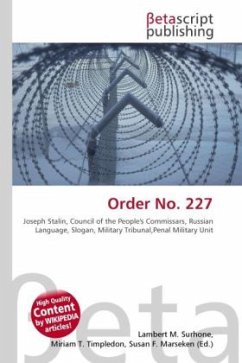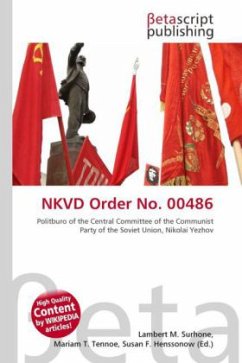High Quality Content by WIKIPEDIA articles! No commander had the right to retreat without an order. Anyone who did so was subject to a military tribunal of the corresponding seniority level. Order No. 227 established that each Front must create 1 to 3 penal battalions ( , , shtrafbat, shtrafnoy batalion) of soldiers accused of disciplinary problems, which were sent to the most dangerous sections of the front lines. Each Front had to create penal companies for privates and NCOs. From 1942 to 1945, 427,910 soldiers were assigned to penal battalions. The order also directed that each Army must create "blocking detachments" (barrier troops ( , )) which would shoot "cowards" and fleeing panicked troops at the rear. In the first two months following the order, over 1,000 troops were shot by blocking units and blocking units sent over 130,000 troops to penal battalions.
Bitte wählen Sie Ihr Anliegen aus.
Rechnungen
Retourenschein anfordern
Bestellstatus
Storno








